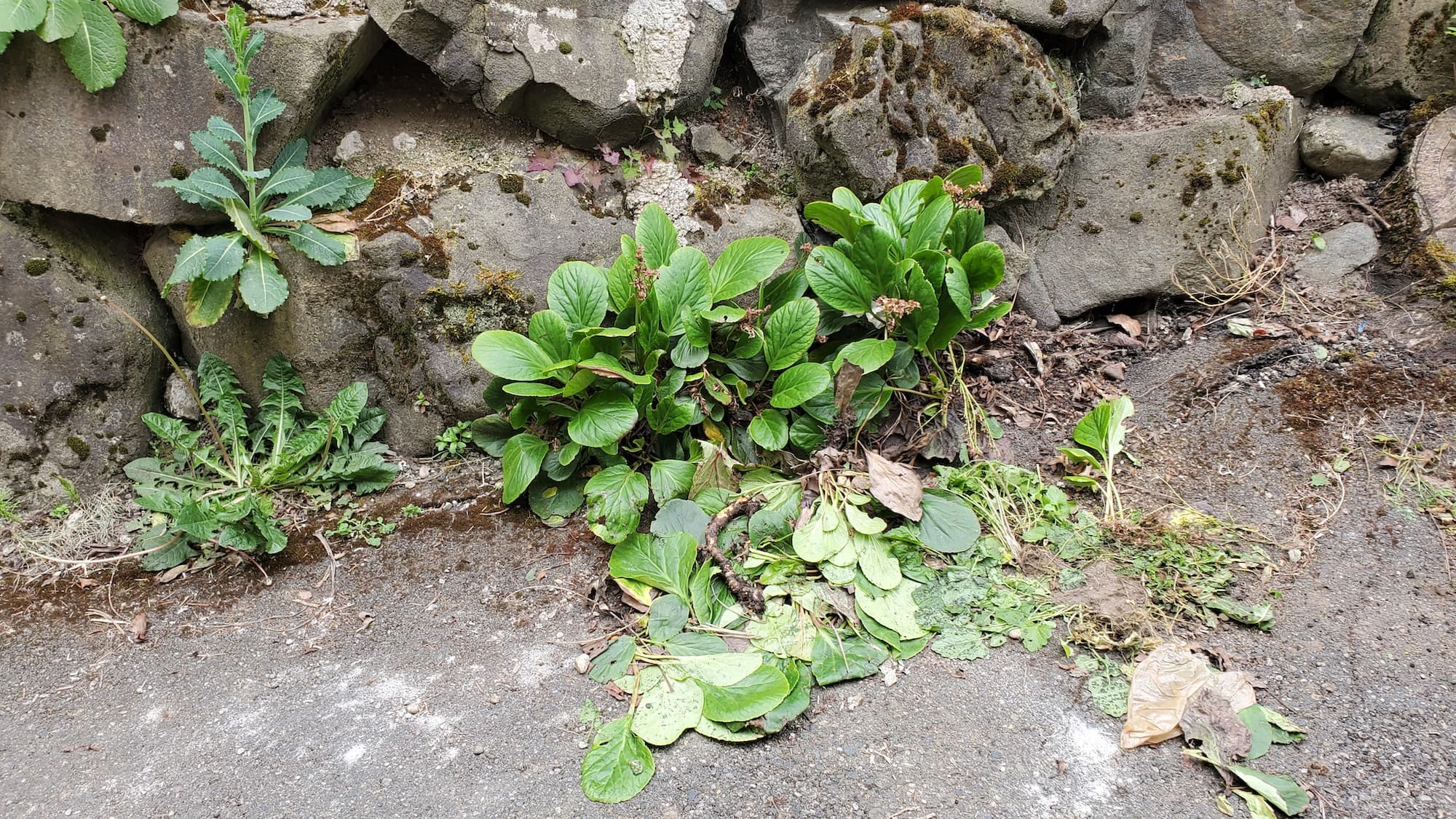West Seattle Remove Volunteer Saplings

Homeowner’s Issue
West Seattle yards get pushed by the weather and the trees. Winters are long and wet (October–May), summers mild and often sunny enough in July–August to let fast-growing volunteers take off. Most soils here are compacted loam over glacial till on the bluffs, shifting to sandier pockets near Alki and peaty, moisture-retentive fills in low spots toward Lincoln Park. Combine that with shaded slopes, heavy leaf litter, and drip lines from big native maples and you get an ideal nursery for volunteer saplings: alder, black cottonwood, invasive willow shoots and maple seedlings.
On hillier parcels—Admiral, Puget Ridge—saplings establish in drainage hollows and destabilize shallow mulch berms; on flat lots they choke beds and tangle with established shrubs. HOA rules or neighborhood covenants around view corridors and sight lines are common, so regrowth matters more than just a tidy lawn. We use no herbicides: mechanical root removal, targeted digging, mulching, and solar-smothering in tight spots. The goal is to stop seedlings before they compete with ornamentals, reduce slip hazards on mossy paths, and lower long-term maintenance in West Seattle microclimates.
Our Quality Service
We remove volunteer saplings with practical, sustainable methods: hand-pulling, root extraction with digging tools, selective stump grinding for larger volunteers, and chip-and-compost or haul-away of green waste. We check for drainage lines and erosion risks on slopes and recommend low-water, native replacements where appropriate. Typical job timeline: small yard same-day; average single-driveway property 1–3 hours; larger or slope work scheduled with a prep visit.
We bring: shovels, root saws, hand pruners, small stump grinder (when needed), chipper, tarps, and compost-grade bags. No herbicides ever. We follow West Seattle seasonal windows—late spring and early summer for best root removal, and avoid heavy wet-weather excavation.
Benefits: safer walkways, improved curb appeal, less competition for trees and shrubs, and reduced weekly maintenance. Work finished cleanly so your neighbors ask who did it—not why it looked cheap.
What’s Included
- Site assessment and sapling identification.
- Mechanical removal of saplings and roots.
- Debris management: chipping for compost, haul-away, or green-bin prep.
- Light bed regrading and mulch top-up to suppress regrowth.
- Written follow-up notes with care tips.
Options / Upgrades:
- Mulch + landscape fabric for high-weed beds.
- Organic soil amendment (compost) — improves stability and plant health.
- Stump grinding for volunteers >2” diameter.
- Planting small native replacements (salal, evergreen huckleberry) after removal.
- Haul-away vs. green bin prep (you choose disposal method).
Before & After / Expectations
Expect some noise and soil disturbance on service day—digging and chipping make a mess briefly, but we haul or chip most debris same day. Access to the area helps: clear a 3–4 ft path if possible; for steep slopes we may need a short prep visit. Larger roots in compacted clay may require return visits to prevent resprouts.
West Seattle care tips:
- Water new plantings early morning during July–August dry spells; otherwise rely on seasonal rains.
- Watch for weed pressure late spring (May–June) and after fall leaf drop—mulch renewal in early spring helps.
- Moss thrives in shady, compacted spots; address compaction and increase aeration where moss recurs.
- Ivy and woody vines need yearly attention; remove base stems to reduce regrowth.
FAQs
Q: Will saplings come back after you remove them?
A: If roots are fully extracted or stump ground, regrowth is unlikely. Tiny seedlings reappear in high-seed years—annual follow-up or mulching prevents them from establishing.
Q: Do you use chemicals to stop regrowth?
A: Never. We use mechanical removal, mulch smothering, and organic methods only.
Q: How long will the job take on a typical West Seattle front yard?
A: Most typical jobs are 1–3 hours. Larger properties or slope work require a site visit and a half- to full-day.
Q: Do you haul everything away?
A: We offer chip-for-compost, green-bin prep, or haul-away. Tell us your preferred disposal method.
Q: Are you insured?
A: Yes—our crew is insured and experienced on West Seattle slopes and compact yards.
Call to Action
If volunteer saplings are taking over your beds or threatening slopes in West Seattle, book a quick estimate. We book fast and give honest, local advice—no upsell, just practical work that lasts. Email neatandtidyseattle@gmail.com for photos, a free estimate, or to schedule an on-site visit with a crew leader who knows the hills and the rain patterns.









